Some things you should know about me:
I’m a pretty geeky guy.
I love comics, movies, TV, video games, and just thinking a lot about things that matter (and some things that don’t matter that much, like proper parking etiquette or pizza).
I can be shy, I prefer structure except when I don’t, I love coming up with ideas, I get really excited about the things I like, and small talk can be a bore for me.
Personal Branding Lessons from the Higher Ed Geek
Being geeky has always been a part of me. So much so that I made it my professional “brand” (which I put in air quotes since branding can be a loaded term but it’s the best way to capture a professional identity). I created the moniker “Higher Ed Geek” for myself several years back as a way to capture who I am, what I care about, and a way to distinguish myself in a crowded world.
The method I took to come to this is simple, but powerful in creating a unique brand. The equation goes like this; combine two things you love and/or are good at, and there you have it. It can mean making nerdy paintings of your favorite TV show, or it can mean combining academic theories with video game characters. The inspiration from this idea came from a talk Chris Hardwick gave several years back when I was a graduate student at Rutgers University.
The core acceptance you have to make here is that (hardly) anything is original anymore. It’s all been done before but you have to work to find something “original” by remixing and mashing up things that exist already. This idea resonated with me after reading Austin Kleon’s great book, Steal Like an Artist. He explains, “All creative work builds on what came before. Nothing is completely original....If we’re free from the burden of trying to be completely original, we can stop trying to make something out of nothing, and we can embrace influence instead of running away from it.”
We see this being successful a lot lately with things that connect with people emotionally by being nostalgic or referential while not being derivative. Good examples include Stranger Things or Get Out and bad examples include The Orville (I think this shows we’re ready for Seth MacFarlane to take a sabbatical for a little while, but I digress).
You want a brand that will set you apart. We live in a noisy world, so it can be hard to stand out. But thankfully, often the good stuff boils to the top. Awesome videos on YouTube go viral, amazing shows become binge worthy, and we’re able to reach “our people” easier than ever before. Success is what we make of it. I can be connecting with as many people as possible, or it can mean reaching our niche audience (either locally or globally) and giving them immense value.
Hopefully you found this helpful in seeking out your tribe and figuring out your path. While mine has been a rocky one, I’ve always had the guiding point of my unique brand that I know is genuinely me, and is something I can continually work to build upon. And while I took inspiration from someone, and many of us do, I believe Austin Kleon put it beautifully when he wrote, “In the end, merely imitating your heroes is not flattering them. Transforming their work into something of your own is how you flatter them. Adding something to the world that only you can add.”
Now go forth and find your niche!

